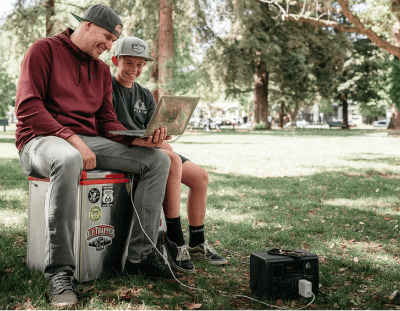Getting the most out of your solar investment requires understanding how panels work and implementing routine maintenance practices. While solar panels are renowned for their reliability and minimal upkeep requirements, a basic understanding of their functionality and simple maintenance can prevent issues and ensure optimal performance throughout their lifespan.
In this article, we'll explore how solar panels work, common problems you might encounter, and essential maintenance tips to keep your system running efficiently. At Outbax, we're committed to providing quality solar panels and components to power your outdoor adventures and off-grid lifestyle.
The Science Behind the Power: How Solar Panels Work
Solar panels harness energy through the photovoltaic effect—a process where specialised cells convert sunlight (photons) into electricity (DC power). When sunlight strikes the silicon-based cells in your panels, it excites electrons, creating an electric current. This direct current (DC) power is then transformed by an inverter into alternating current (AC), which is compatible with standard household appliances.
In systems with battery storage, a solar charge controller like the VoltX SRNE 12V/24V 40A MPPT Solar Charge Controller regulates the flow of electricity between the panels and batteries, preventing overcharging and optimising the charging process. Understanding how solar panels work helps you better troubleshoot any performance issues that may arise and appreciate the elegant simplicity of this renewable energy technology.

VoltX 12V 130W Fixed Solar Panel
Common Solar Panel Problems and How to Identify Them
Even the most robust solar panel systems can experience occasional problems. Reduced output is perhaps the most common issue, manifesting as a noticeable decrease in energy production that could stem from various factors. Wiring problems, including loose connections or damaged cables, frequently disrupt the flow of electricity and compromise system performance.
Inverter faults represent another common point of failure, often signalled by warning lights or error codes on the device itself. Physical obstacles like shade from growing trees or accumulated debris significantly impact performance—even partial shading of a single panel can disproportionately affect your entire system's output. Panel damage such as micro-cracks, hot spots, or visible physical damage may occur after severe weather events or improper handling.
Over longer periods, some panels may develop Potential Induced Degradation (PID), a gradual performance deterioration caused by voltage differences within the system. Regular monitoring using performance apps and routine visual inspections will help you identify these issues before they significantly impact your energy production.
Essential Solar Panel Maintenance Tips
Maintaining your solar panels properly enhances their efficiency and extends their operational life. Regular cleaning is crucial, particularly in Australia where dust, pollen, and bird droppings can accumulate quickly. For most Australian regions, cleaning every three to six months is recommended, although this frequency might increase in particularly dusty areas or during drought conditions. Use a soft brush, microfibre cloth, and distilled water—avoiding harsh chemicals or high-pressure washing that might damage the panels.
For roof-mounted systems, prioritise safety by hiring professionals rather than attempting dangerous cleaning yourself. Beyond cleaning, conduct periodic visual inspections for any obvious damage, loose connections, or new sources of shading. Leverage monitoring systems to track performance trends and identify gradual decreases in efficiency that might otherwise go unnoticed. Additionally, scheduling professional inspections annually allows technicians to identify and address potential issues before they become serious problems, verifying electrical connections and component functioning that might not be evident to the untrained eye.
Maintaining your solar panels ensures they work efficiently with the other components of your power system, such as batteries and charge controllers. At Outbax, we offer a wide selection of high-quality solar panels and essential accessories designed for durability and reliable performance in the Australian outdoors.
We specialise in providing comprehensive power solutions, including various battery types engineered for different applications and lifespans. Whether you're looking to power a weekend camping trip or establish a reliable off-grid system, we provide dependable products that, with proper care, will help you enjoy consistent power on your adventures.
Conclusion
Understanding solar panel functionality, recognising common problems, and implementing regular maintenance practices are essential for maximising your renewable energy investment. Proactive care significantly extends the lifespan of your solar panels and ensures optimal energy production for years to come. Remember to consult your product manuals for specific maintenance requirements and don't hesitate to seek professional assistance when confronted with complex issues beyond basic troubleshooting.
Outbax remains your trusted partner for quality solar power products and components, helping you build and maintain a reliable system that meets your energy needs. Visit our website today to explore our comprehensive guides and high-quality solar products designed specifically for Australian conditions.


